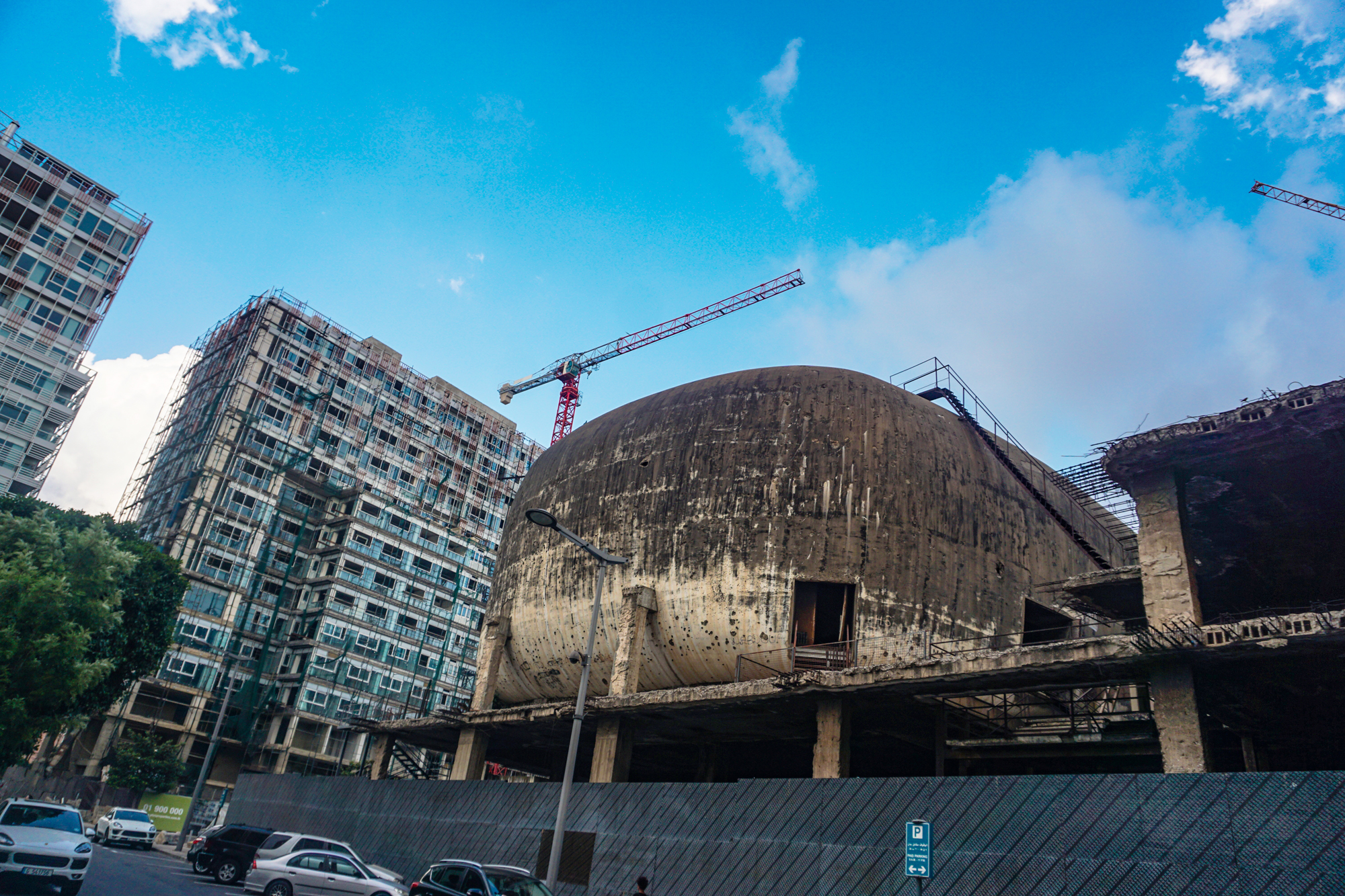TOURING BEIRUT: 5 (non-food) reasons to visit Beirut
Near martyr square and Mohammad Al-Amin Mosque, Beirut, Lebanon
Dear Foodie Fam,
When we told people we were going to Beirut, we got a lot of “why are you going there?” or “isn’t it dangerous?”
If you want to know why we went, read on:
BUT WHY BEIRUT?
FACTS ABOUT BEIRUT and LEBANON:
It’s like no place I’ve been before.
Lebanon is the second smallest country in the Middle East. According to the Telegraph, "it would fit into the Middle East's biggest state, Saudi Arabia, some 206 times.”
Lebanon is pretty easy-going… they have more public holidays (16) than most countries!
Beirut (the capital of Lebanon) is 5,000 years old.
The New York Times, The Guardian and Condé Nast have dubbed it a “top city to see”.
Travel+Leisure and Yahoo called it “the best international city for food.”
The city was chosen by New 7 Wonders as one of the New 7 Wonders of Cities.
There’s lots of day trips you can take from Beirut:
Baalbek: hosts Ancient Roman ruins in great condition.
Byblos: at once, home to the Phoenicians. Now, home to the oldest continuously inhabited space on earth.
Tripoli: ancient souks and crusader sites.
Anjar: 8th-century Ummayad ruins.
Tyre: port city of the Phoenicians and the birthplace of Europa.
Ksara Chateau: one of Lebanon's oldest wineries.
Jeita Grotto: caves of limestone millions of years old.
Cedar Trees: UNESCO World Heritage-listed Holy Valley .
Wheatpasted posters. Mar Mikhael, Beirut, Lebanon
5 (non-food) reasons why BEIRUT HAD ME SHOOK:
The Egg. Beirut, Lebanon.
1
Feeling the Optimism
Though many loved ones reminded us of it’s wars stretching from the 1970s through the 2000s, Beirut is more than it’s violent past. I find the city very human.
Beirut keeps the scars of a chaotic history while confidently moving forward. Everywhere in the city, buildings riddled by bullets from the civil war stand alongside freshly crafted urban developments. Shiny luxury hotels neighbor the Grand Holiday Inn on Rue Omar Daouk (where in the 1970s, snipers infamously roosted and took heavy artillery fire). Near Martyrs' Square, a building referred to as “The Egg” was planned to be a modern movie theatre in the 1960s and remains unfinished. Today, it’s an icon of the violence of the 1970s.
It’s zealous- this gentle architectural healing… this debate over which massively marred structures stay or go. Here, there is a marked and fervent dialogue. It’s as if the entire city is combing through both it’s past and it’s future, striving to write it’s history as accurately and vibrantly as possible.
[ LINK TO COME: More on the significance of the structures near Martyr Square. ]
2
Learning from Conversations
Different governing bodies over centuries left Lebanon their languages and their cultures.
Architecture here is French, Gothic, Arabesque and Ottoman. The French, English and Arabic languages are used interchangeably and refugees added to this melting pot. This was fun to listen to and play with because I speak English, studied French and am learning Arabic.
Side Note: When I go where kids speak their native tongue and are required to learn English in school, I have a moment of weirdness inside: First of all, I feel like an absolute ass for hailing from where kids naturally grew up speaking English and learning any other language was only extracurricular. Then, I feel entirely envious, awed by these splendidly bilingual kids!
All those languages come in handy for Beirut locals who all seem to be caught up in perpetual conversation. Sometimes, there’s even people talking right in the middle of a busy street (and have you seen the driving in Arab countries?)! When we went anywhere, Dutch and I always reserved time to engage in the inevitable congenial conversation with locals over our shared humanity - experiences, joys, hopes and disappointments. They were curious and we were, too.
Beirut - with it’s many faces from many places - remained comfortable sharing and learning. We made many meaningful connections with shop owners, Uber drivers and even people we met at clubs! These are the kinds of conversations that make you always want to remember your new acquaintance’s name.
Yes, there are still stark differences between the way women in Lebanon and women in America are treated. The way women are hit on, catcalled and given space in Beirut is different than in Sacramento. But, we got to talk to more women here than in other largely Muslim countries we’ve visited. It was refreshing that - even as a married woman - I was engaged in and welcomed respectfully and freely into conversation. Outside of holy places, I was also able to wear whatever I wanted without angry reactions.
A concert commonly held on steps. Mar Mikhael. Beirut, Lebanon
3
Feeling the Acceleration
Due to France’s presence after WWI, Beirut was and is still known as the Paris of the East.
Beirut is arguably a leading force in liberal thought, intellectualism, commercialism and art amongst Arab countries. It’s even gaining a name for itself in medical tourism.
Artwise, Beirut is blossoming. It’s crawling with electrically bright street art. Exquisitely designed galleries and museums exhibit brilliant artwork. Some districts almost resemble Manhattan or San Francisco. Rue de Gourard in Gemmayzeh - an area comprised almost exclusively of Ottoman-era buildings - boasts over 100 coffee shops, bars and lounges. The northeastern district of Mar Mikhael is also known for live music, trendy eateries and independent boutiques. They’ve even got tastings of craft breweries. We stayed in Mar Mikhael… For a lack of better words, it struck me as nothing less than hip and modern.
I wanted all of these magnets. Duh.
Other institutions thriving in Beirut include international organizations. The city serves as the seat of The UNESCO for Western Asia, Union of Arab Banks and Union of Arab Stock Exchanges. Both the International Labour Organization and UNESCO have regional offices here, too.
Beirut also hosts the highest ranking and most prestigious university in the Middle East- The American University of Beirut. It’s an independent, private, non sectarian university.
Just through the front to The American University of Beirut. Beirut, Lebanon.
Like in any good college community, a long glowing line of convenient eateries are just outside the main entrance to the university.
St. Georges Maronite Church and Mohammad Al-Amin Mosque. Beirut, Lebanon
Witnessing the Coexistence
Beirut’s location on the Mediterranean Sea has made it accessible to many religions. There’s 18 recognized religious groups in Beirut including at least four Muslim sects, 12 Christian sects and a Jewish community. There are Catholic churches standing flush to mosques.
The most common religion in Lebanon is Islam. The Muslim population is split almost equally between the Sunni and Shia. Very often, when Lebanese people ask each other where they are “from”, they are trying to clarify the religious sect of the person asked.
Christians like Protestants, Orthodox, Melkites and Maronites also make their home in Lebanon. In fact, Lebanon has the highest population of Christians in the Middle-East. About 40% of the Lebanese population is Christian. Churches represented include the Maronite Church, the Eastern Orthodox Church, the Armenian Apostolic Church and the Assyrian Church of the East.
As the Middle Eastern country with the most religions, Lebanon is a secular state. There’s freedom of religion here and only one’s religion governs family matters like marriage, divorce and inheritance.
4
Sky Bar. Beirut, Lebanon
5
The Nightlife
There’s kids and families out enjoying the city at all times of day… and adults out partying on every night (weekdays, included)! Beirut was dubbed the “Party Capital of the Arab World." …I can testify to seeing clubs entirely full to capacity on a Wednesday night.
The stamina, good vibes and ambiance in Beirut’s bars and lounges put most American party nights I’ve experienced to shame!
Lists are strict and intimidating where they claim to be exclusive. The crowd is packed and varied where the dress code and list is more lax.
People are just letting go, left and right. Torches frenetically blast fire.
There’s partygoers crowding an underground club made to resemble a bomb shelter, for God’s sake…with it’s own faux retractable roofs. B018 stands on what was once a quarantine established by the French. In the 1970s, that same soil saw thousands of encamped Palestinian, Kurdish and South Lebanese refugees get massacred or expelled by a Phalangist militia. Take what you will from Beirut’s ability to dance on its ashes!
Above ground (WAY above ground) is Sky Bar. Perched high on the Beirut International Exhibition and Leisure Center, its boisterous and happy to be seen and heard. You can hear their music perfectly, catch glimpses of smoke from blasts of their torches and almost watch the videos on their screens from a long way down the road. Seeing this graffitied club from the street below, I can only imagine I was not the first one to feel like I had to get up there. Once inside, I saw four DJs spinning together. Every now and then, they muted popular tracks to let club goers fling clashing emotions and famous lyrics like the confetti in the air.
I should mention: Soldiers stationed at almost all corners of Beirut pointed us in the right direction of the best clubs of the moment. They told us to tell any bar that rejects us to fuck off. We never said that, but let’s just say that when we opened our mouths, something about our accent did prove to open doors. Many told us we were allowed easier access because we are American and many of the best clubs in Beirut enjoy our deep pockets on vacation or blowing off steam from business meetings.
Iris. Beirut, Lebanon.
…Now what about that food? That post, to come!
To get an instant idea of the many facets of this stunning, city, read about the most eclectic square mile I have ever visited, here. [LINK TO COME]





















